MARIANI’S
Virtual
Gourmet
January
22, 2023
NEWSLETTER
IN THIS ISSUE
JAMES BOND'S TASTES:
ON HER MAJESTY'S SECRET SERVICE
By John Mariani
NEW YORK CORNER
SWEETBRIAR
By John Mariani
GOING AFTER HARRY LIME
CHAPTER FOUR
By John Mariani
NOTES FROM THE WINE CELLAR
HOT TODDY TIME
By John Mariani
JAMES BOND'S TASTES:
ON HER MAJESTY'S SECRET SERVICE
By John Mariani
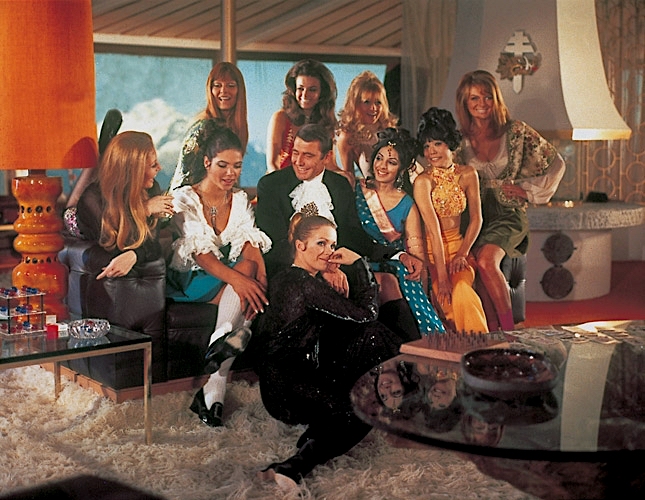
With the tenth novel in the James Bond
series, Ian Fleming sought to get back to a more
realistic story and to show Bond’s sensitive
side by having him get married, then lose his
bride. Published in 1963, it is the second in
the “Blofeld Trilogy” that began with Thunderball
and concluded with You Only
Live Twice, with 007 tracking SPECTRE’s
Stavro Blofeld after the ending of
Thunderball.
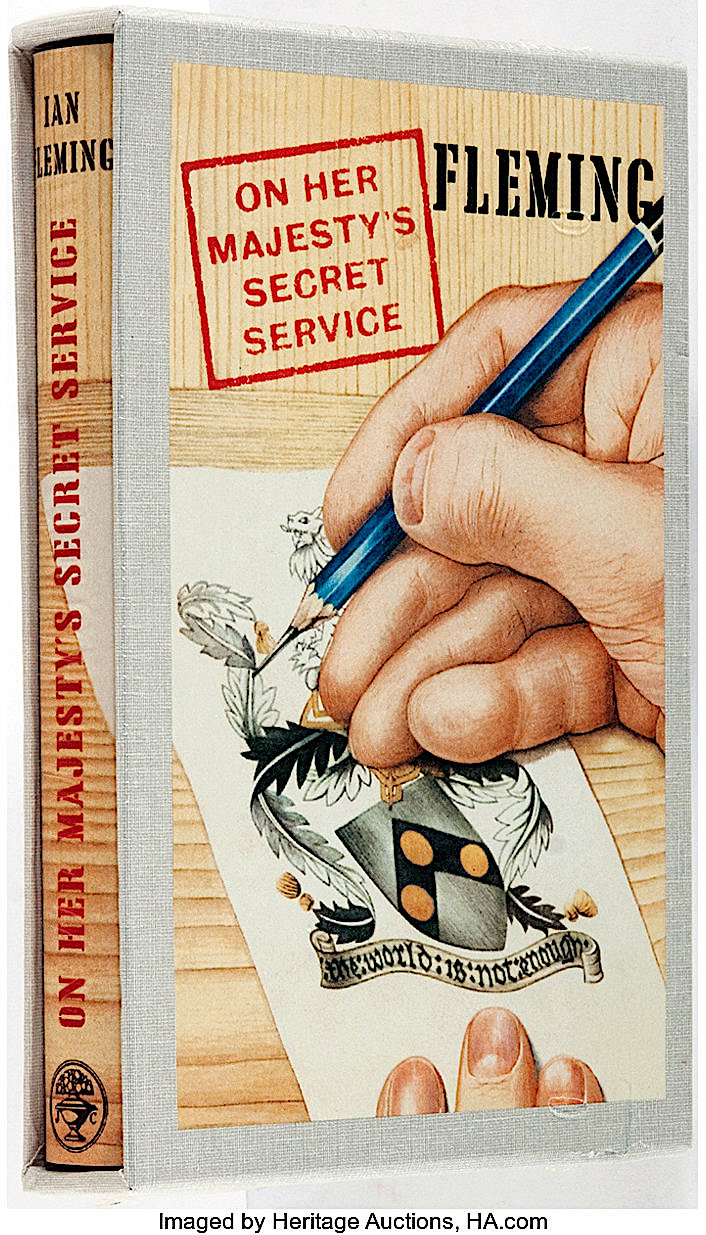 In On Her
Majesty’s Secret Service Bond travels to
Royale-les-Eaux (also a locale
In On Her
Majesty’s Secret Service Bond travels to
Royale-les-Eaux (also a locale in Casino
Royale), checking into the Hotel Splendide,
where he meets the beautiful, but suicidal
Contessa Teresa “Tracy” di Vicenzo.
in Casino
Royale), checking into the Hotel Splendide,
where he meets the beautiful, but suicidal
Contessa Teresa “Tracy” di Vicenzo.
Fleming
(left) wrote: “James Bond was not a
gourmet. In England he lived on grill soles, oeufs en
cocotte (right)
and cold roast beef with potato salad. But when
traveling abroad, generally by himself, meals were
a welcome break in the day, something to look
forward to, something to break the tension of fast
driving, with its risks taken or avoided, the
narrow squeaks, the permanent background of
concern for the fitness of his machine.” (While
Bond’s salary as an 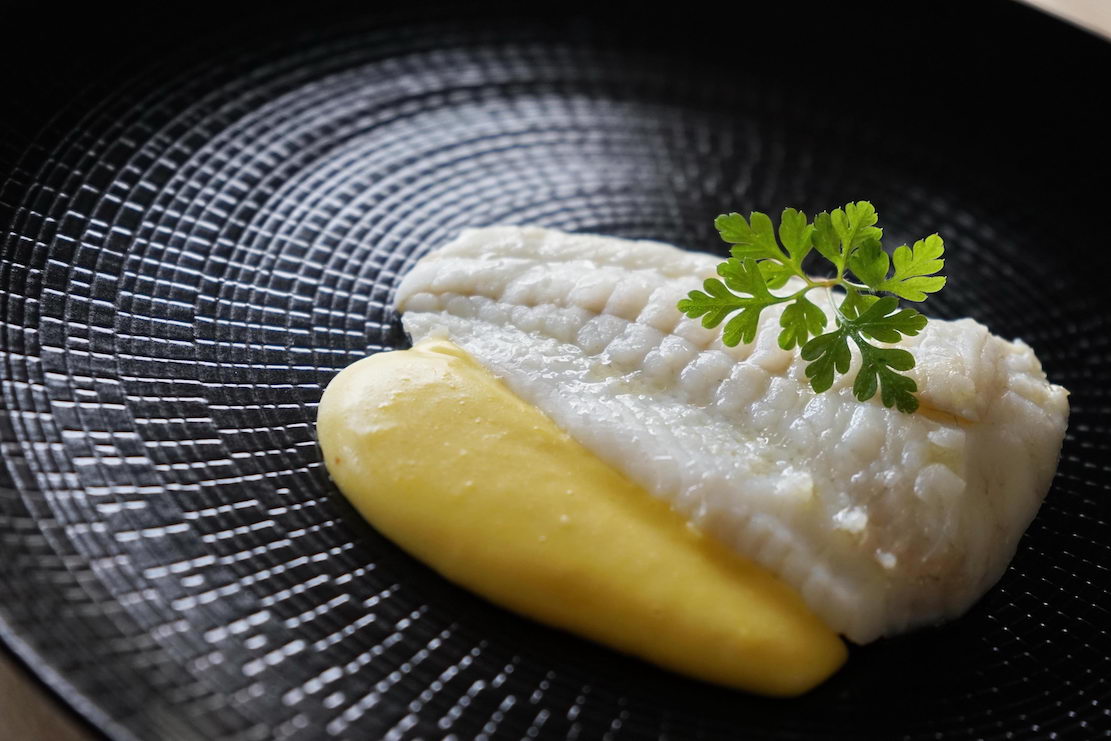 agent was not
high, his expense account while on duty was pretty
much unlimited. )
agent was not
high, his expense account while on duty was pretty
much unlimited. )
Disappointed
with the food at the hotel, he dines alone at a
favorite unnamed spot where he enjoys poached
turbot with sauce mousseline and a roast partridge
with a Mouton Rothschild ’53 and ten-year-old
Calvados.
Bond meets Tracy’s father, Marc-Ange Draco,
head of the Union Corse crime syndicate, who
drinks I.W. Harper bourbon while
007 sips Pinch bottle Haig. Sensing
Bond is a dominating male, Draco offers Bond £1
million to marry his daughter in an effort to
change her destructive lifestyle. Bond refuses.
 Bond
returns to
London, where his maid May cooks him scrambled
eggs while he puts away four double vodka tonics.
He flies to Switzerland and goes to the Alpenberghaus
und Restaurant Piz Gloria (left),
which is also Blofeld’s research station. Blofeld
has assumed the title and name of Comte Balthazar
de Bleuville, and Bond, masquerading as a
representative named Sir Hilary Bray of London’s
College of Arms, is asked to confirm the title.
There he meets an array of beautiful women who, he
learns, will be hypnotically turned into
destructive robots carrying biological warfare
agents. Bond
dines with one of them named Violet at the
revolving Restaurant Piz on chicken
Gloria (below),
Bond
returns to
London, where his maid May cooks him scrambled
eggs while he puts away four double vodka tonics.
He flies to Switzerland and goes to the Alpenberghaus
und Restaurant Piz Gloria (left),
which is also Blofeld’s research station. Blofeld
has assumed the title and name of Comte Balthazar
de Bleuville, and Bond, masquerading as a
representative named Sir Hilary Bray of London’s
College of Arms, is asked to confirm the title.
There he meets an array of beautiful women who, he
learns, will be hypnotically turned into
destructive robots carrying biological warfare
agents. Bond
dines with one of them named Violet at the
revolving Restaurant Piz on chicken
Gloria (below), 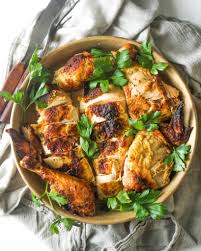 a
spatchcocked chicken grilled and served with a
mustard sauce.
a
spatchcocked chicken grilled and served with a
mustard sauce.
He also meets Irma
Bunt, a SPECTRE agent working with Blofeld.
He again returns to London where he has a
Christmas dinner with M of turkey and flaming plum
pudding with an Algerian wine. He then flies to
Marseilles to meet Draco. Bond asks his taxi
driver Marius
if the bouillabaisse
at Chez Guido is still good. Marius says the true
bouillabaisse “is gone . . .
For the bouillabaisse,
you must have the rascasse, the tender flesh of the
scorpionfish. Today they just use hunks of morue.
The saffron and the garlic, they are always the
same but you could eat pieces of a woman soaked in
those and it would be good.”
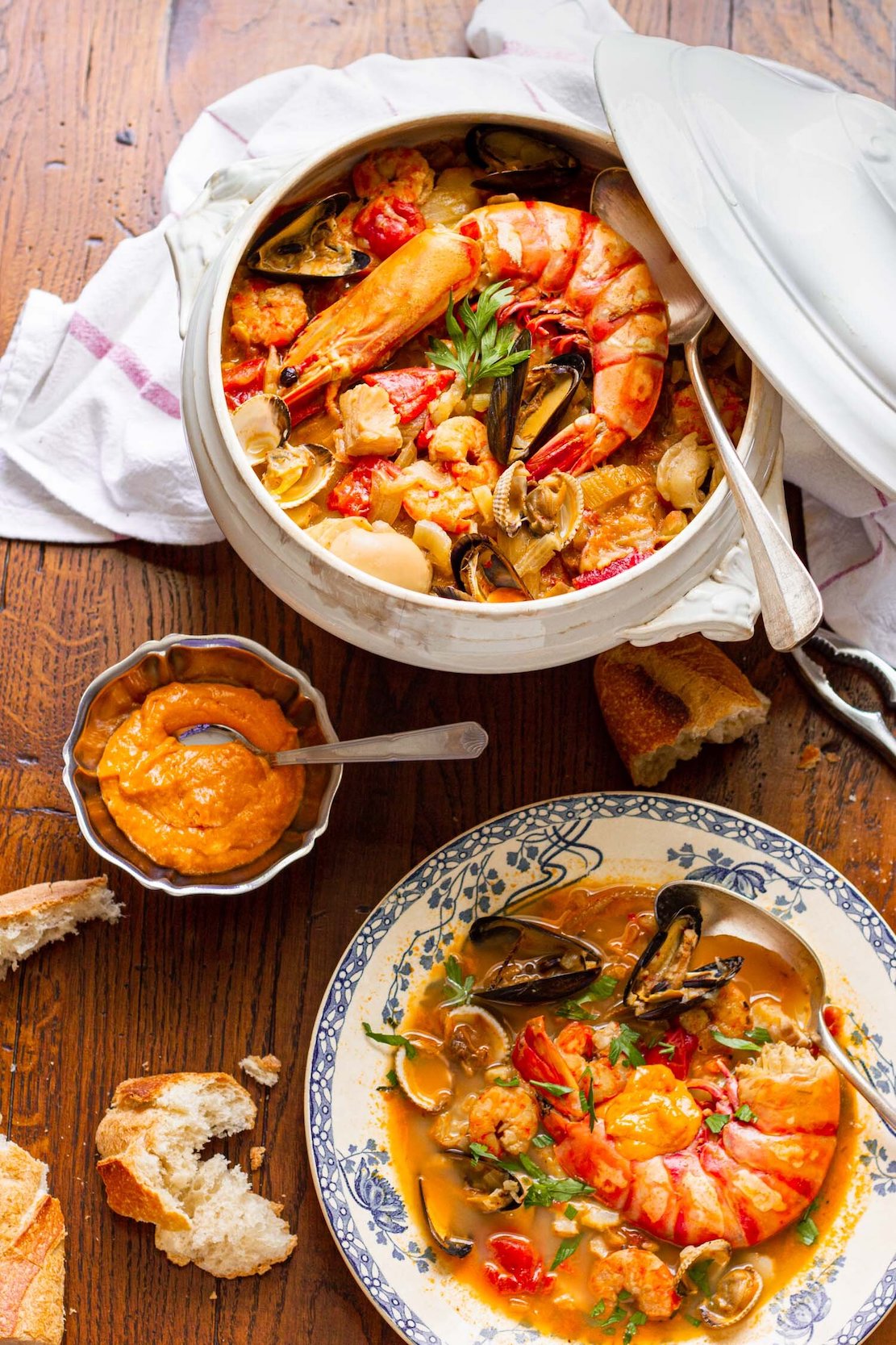 Tracy
calls
Bond from Munich, where she tantalizes him with a
description of her dinner of Krebsschwänze
mit Dilltunke (crayfish with dill sauce) and
Rebrücken
mit Sahne (roebuck with smitane sauce). Bond
replies that he had two ham sandwiches and a half
pint of Harper’s bourbon.
Tracy
calls
Bond from Munich, where she tantalizes him with a
description of her dinner of Krebsschwänze
mit Dilltunke (crayfish with dill sauce) and
Rebrücken
mit Sahne (roebuck with smitane sauce). Bond
replies that he had two ham sandwiches and a half
pint of Harper’s bourbon.
Bond heads for Strasbourg,
staying at the Hôtel Maison Rouge and enjoying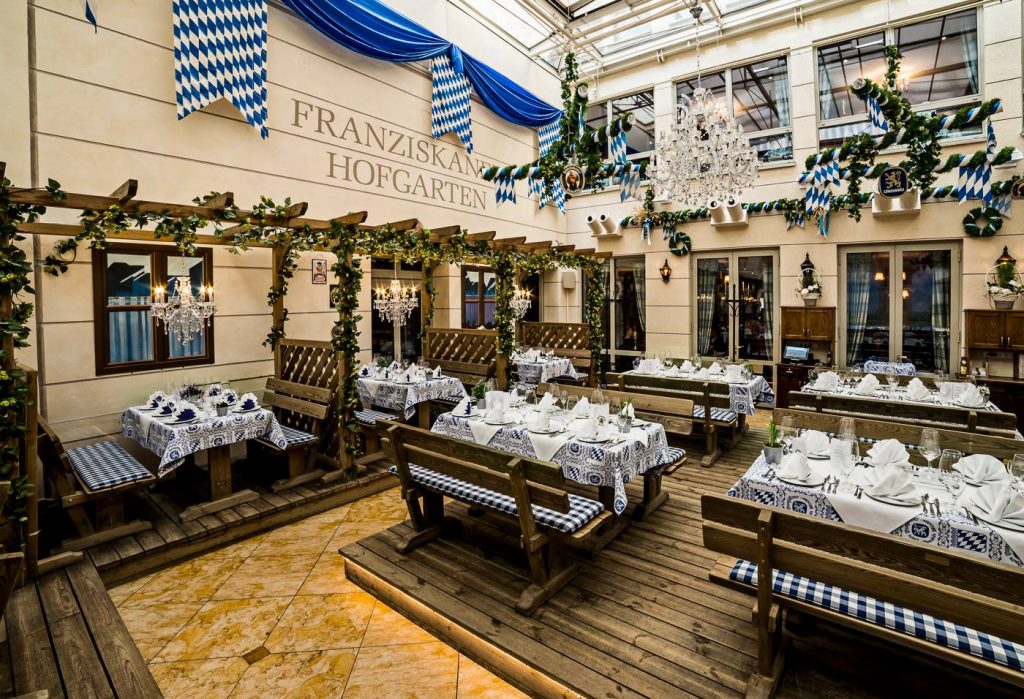 a
meal of foie gras
and Champagne while Draco eats a foot-long
sausage. The next day they eat weisswurst and
pretzels at Zum Franziskaner Keller (right) in
Munich. Bond meets up with Tracy, to whom he
proposes marriage, then returns once again to
London. Helped by Draco's Union Corse, Bond mounts
an air assault on Blofeld, destroying his clinic,
but Blofeld escapes
down a bobsled run.
a
meal of foie gras
and Champagne while Draco eats a foot-long
sausage. The next day they eat weisswurst and
pretzels at Zum Franziskaner Keller (right) in
Munich. Bond meets up with Tracy, to whom he
proposes marriage, then returns once again to
London. Helped by Draco's Union Corse, Bond mounts
an air assault on Blofeld, destroying his clinic,
but Blofeld escapes
down a bobsled run.
In Germany Bond marries Tracy, but as they leave,
Blofeld and Bunt overtake them and kill Tracy.
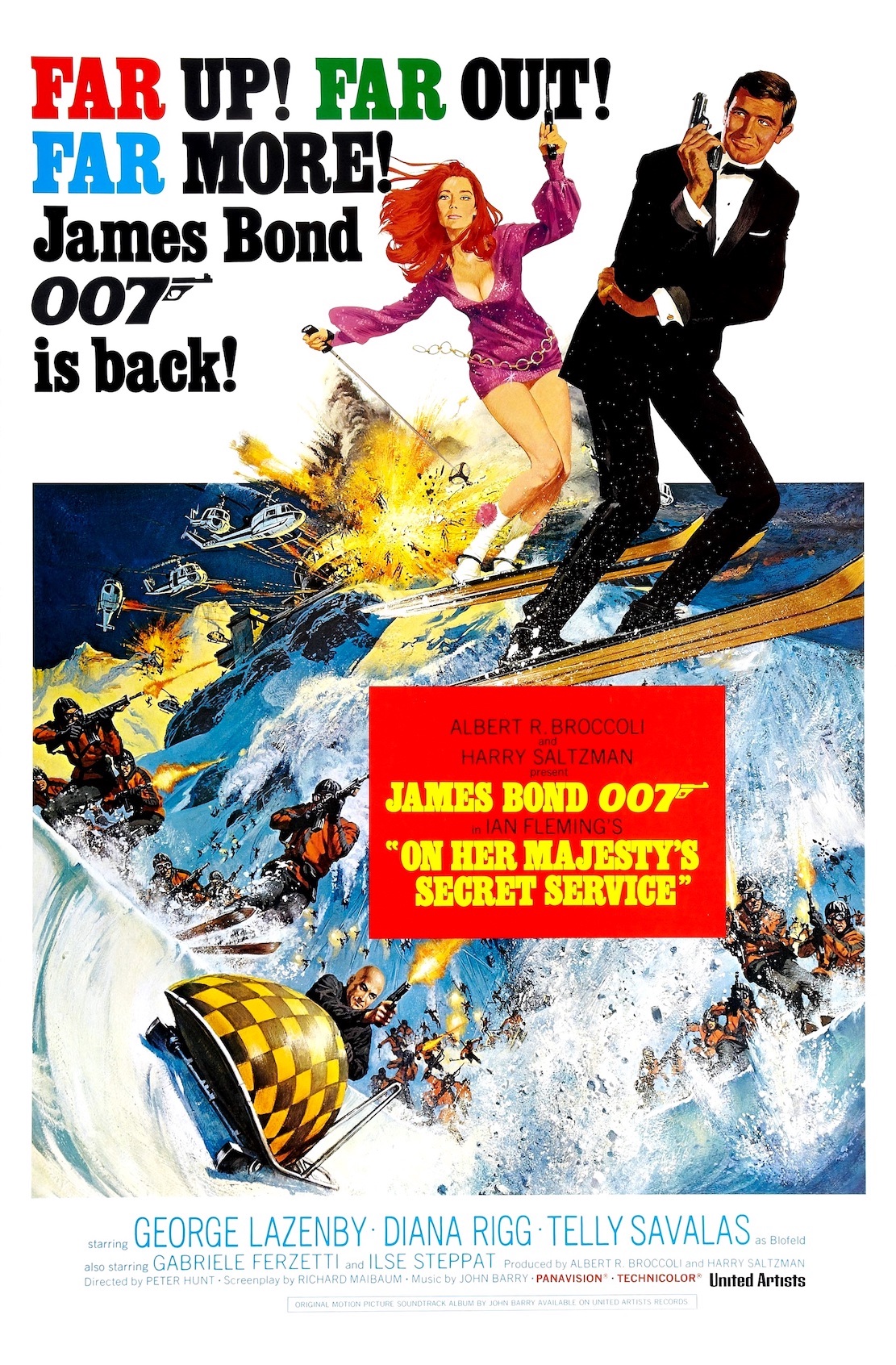 The film On Her
Majesty's Secret Service came out in 1969,
the sixth in the James Bond series, following Sean Connery's
decision to retire from the role after You
Only
Live Twice. The
producers hired George
Lazenby, a
The film On Her
Majesty's Secret Service came out in 1969,
the sixth in the James Bond series, following Sean Connery's
decision to retire from the role after You
Only
Live Twice. The
producers hired George
Lazenby, a 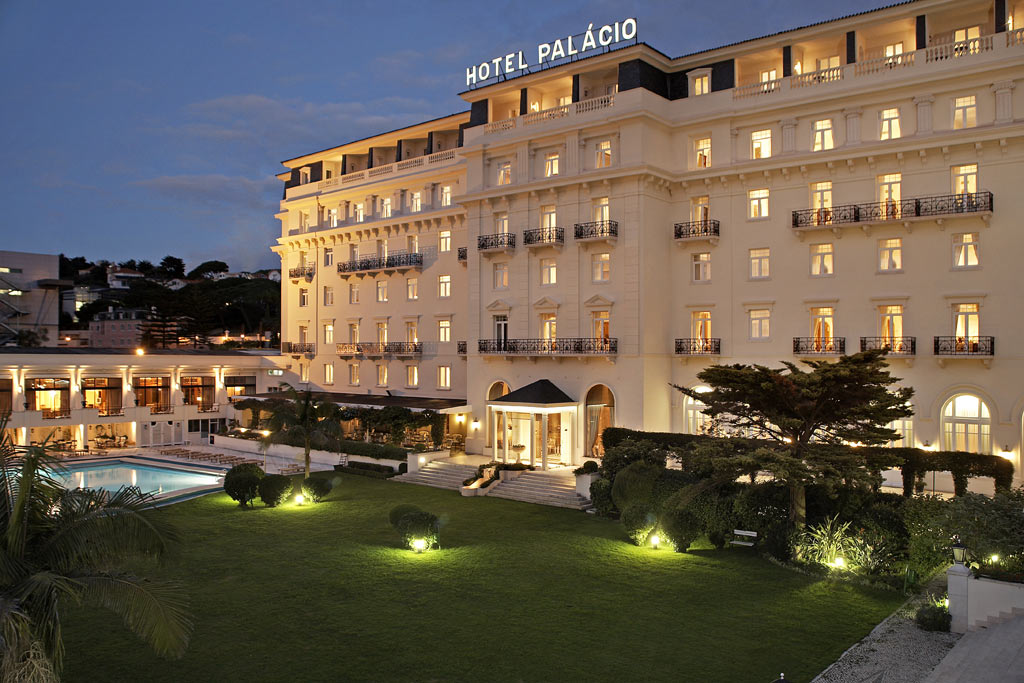 model
with no prior acting credits, to play Bond, and
though he did a creditable job, he never played
the spy again. (The film made money but not as
much as previous 007 adventures.)
model
with no prior acting credits, to play Bond, and
though he did a creditable job, he never played
the spy again. (The film made money but not as
much as previous 007 adventures.)
The script closely follows the
Fleming novel, with Blofeld (Telly Savalas)
planning to hold the world to ransom by a threat
to render all food plants and livestock infertile
through the actions of a group of brainwashed
"angels of death.”
Tracy is played by Diana Rigg.
In the film’s opening Bond is in Portugal
at the Palaçio Estoril, meeting Tracy at Guincho
Beach in Cascais. Later,
at the casino there,
Bond orders Champagne Dom Pérignon and caviar,
which 007 boasts he can tell is from the Caspian
Sea (where, in fact, all true caviar comes from).
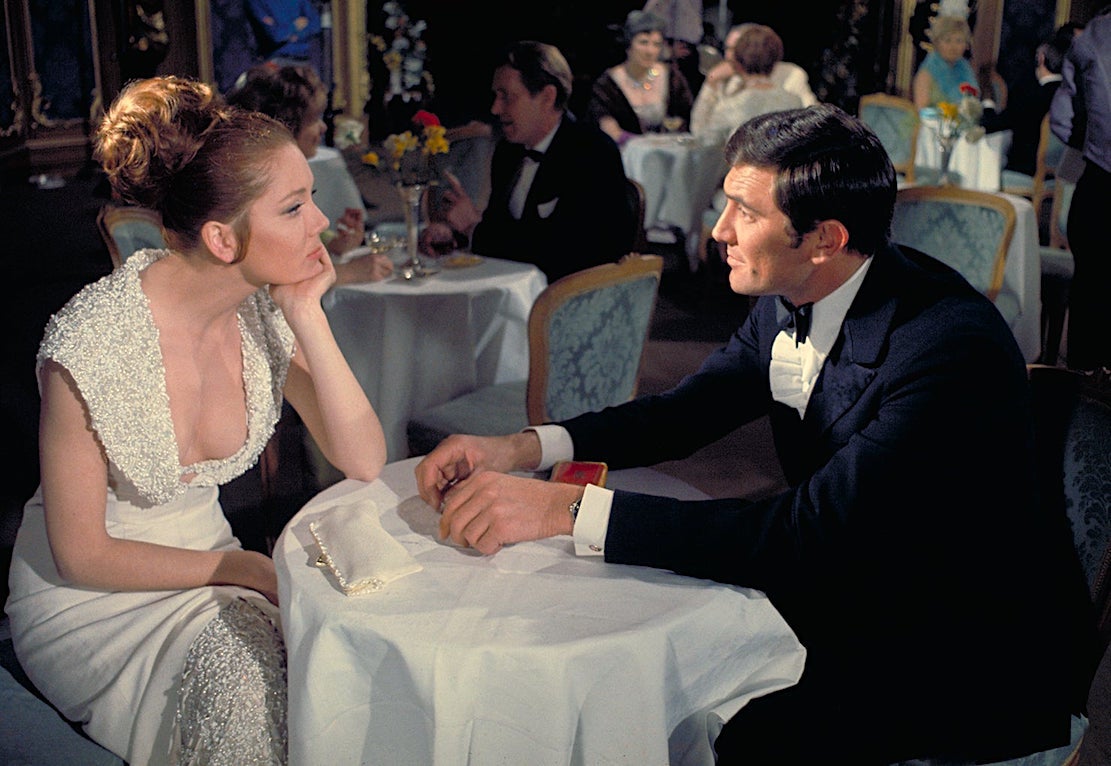 The next morning, Bond is
kidnapped by several
The next morning, Bond is
kidnapped by several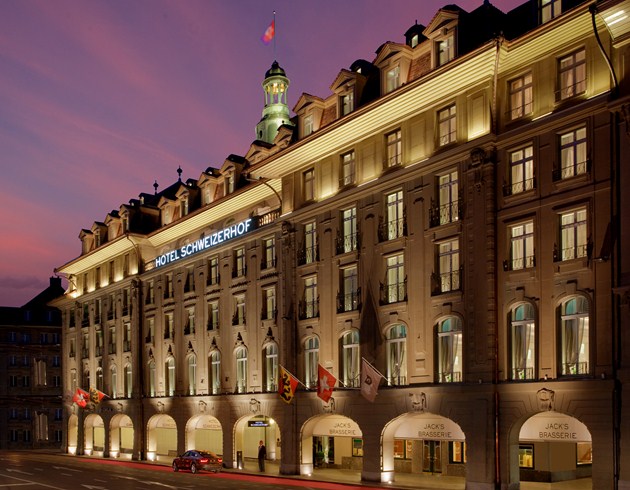 men who take him to meet Draco, who makes Bond the
offer of money to marry Tracy. Bond refuses, but
agrees to continue romancing Tracy, if Draco helps
him track down Blofeld. He later meets Draco and
Tracy at the bullring in Zambujal, Portugal, and
drinks Champagne. 007 flies to Bern, Switzerland,
to the Schweizerhof Hotel (right) and
begins to learn about Blofeld’s plot. At Piz
Gloria he enters the Alpine Room, where a bevy of
twelve beautiful women await him. He orders malt
whiskey and branch water, while an array of foods
with special additives made for the women is
served.
men who take him to meet Draco, who makes Bond the
offer of money to marry Tracy. Bond refuses, but
agrees to continue romancing Tracy, if Draco helps
him track down Blofeld. He later meets Draco and
Tracy at the bullring in Zambujal, Portugal, and
drinks Champagne. 007 flies to Bern, Switzerland,
to the Schweizerhof Hotel (right) and
begins to learn about Blofeld’s plot. At Piz
Gloria he enters the Alpine Room, where a bevy of
twelve beautiful women await him. He orders malt
whiskey and branch water, while an array of foods
with special additives made for the women is
served.
 Tracy
escapes from Blofeld and meets Bond in the
mountain village of Lauterbrunnen, from
which they also escape. Bond
asks Tracy to marry him, and the next day he
escapes an avalanche started by Blofeld. With
Draco and his men, 007 attacks Blofeld's
headquarters.
Tracy
escapes from Blofeld and meets Bond in the
mountain village of Lauterbrunnen, from
which they also escape. Bond
asks Tracy to marry him, and the next day he
escapes an avalanche started by Blofeld. With
Draco and his men, 007 attacks Blofeld's
headquarters.
Bond
and Tracy marry in Lisbon, then
drive away, but Blofeld and Bunt murder Tracy in a
drive-by shooting on a mountain road in the
Arrabida National Park near Setúbal.
SWEETBRIAR
Park
South Hotel
127
East 27th Street
212-204-0225
By John Mariani
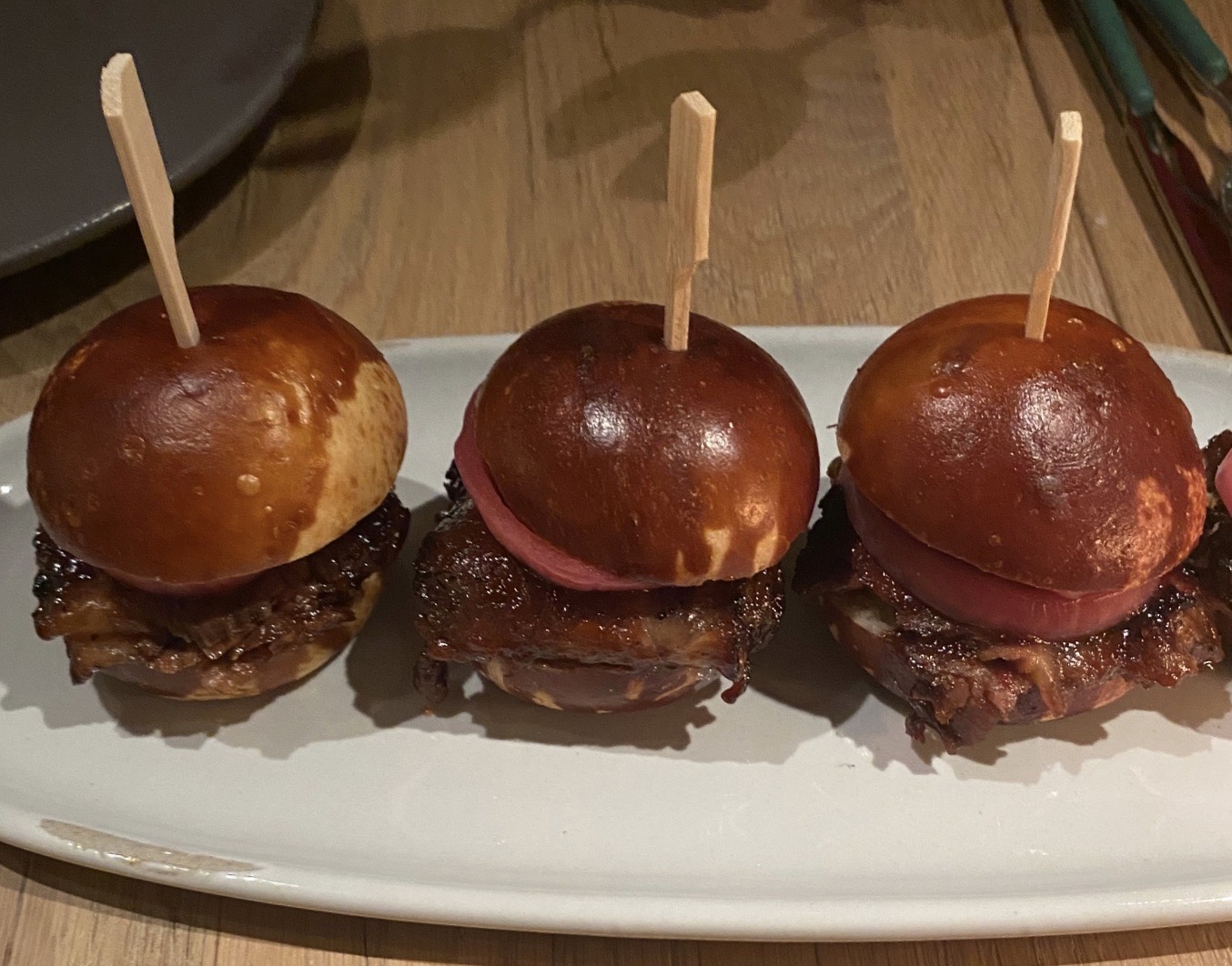
Beyond the formal entrance of the Park
South Hotel you will find one of the most
handsome bars and restaurants in New York.
Designed by Lea Cojot, Sweetbriar is long and
wide, with an open kitchen to one side and
comfortable chairs and banquettes throughout,
all under perfect lighting so as to see your
friends and the hearty food that comes from chef
Bryce Shuman’s flaming kitchen. The bar dazzles
 without
being glitzy, and the bartender takes his job as
seriously as he does with wit.
without
being glitzy, and the bartender takes his job as
seriously as he does with wit.
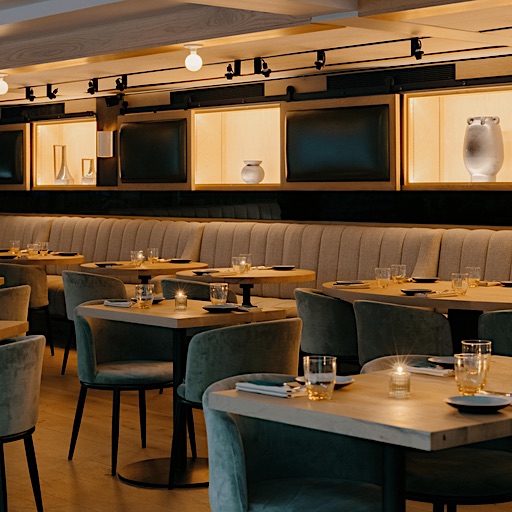 North Carolina
born and bred Shuman (right) has a fine
résumé, with stints at Eleven Madison Park and
Betony, which was my pick in Esquire
for the best restaurant of the year in 2015. He
once did a Rubs ‘n Riesling pop-up and that
brought him to take over at Sweetbriar, where his
southern background comes into play with several
barbecue dishes.
North Carolina
born and bred Shuman (right) has a fine
résumé, with stints at Eleven Madison Park and
Betony, which was my pick in Esquire
for the best restaurant of the year in 2015. He
once did a Rubs ‘n Riesling pop-up and that
brought him to take over at Sweetbriar, where his
southern background comes into play with several
barbecue dishes.
Be prepared for a gargantuan meal, for the
kitchen doesn’t stint on the helpings. Everything
is easy to share and meant to be, like the pretzel
crisps with ricotta mustard ($12) and the “nuts
and Caesar” salad of kale, Caesar dressing (which
had an overdose of anchovy flavor), toasted nuts,
seeds and creamy avocado ($14).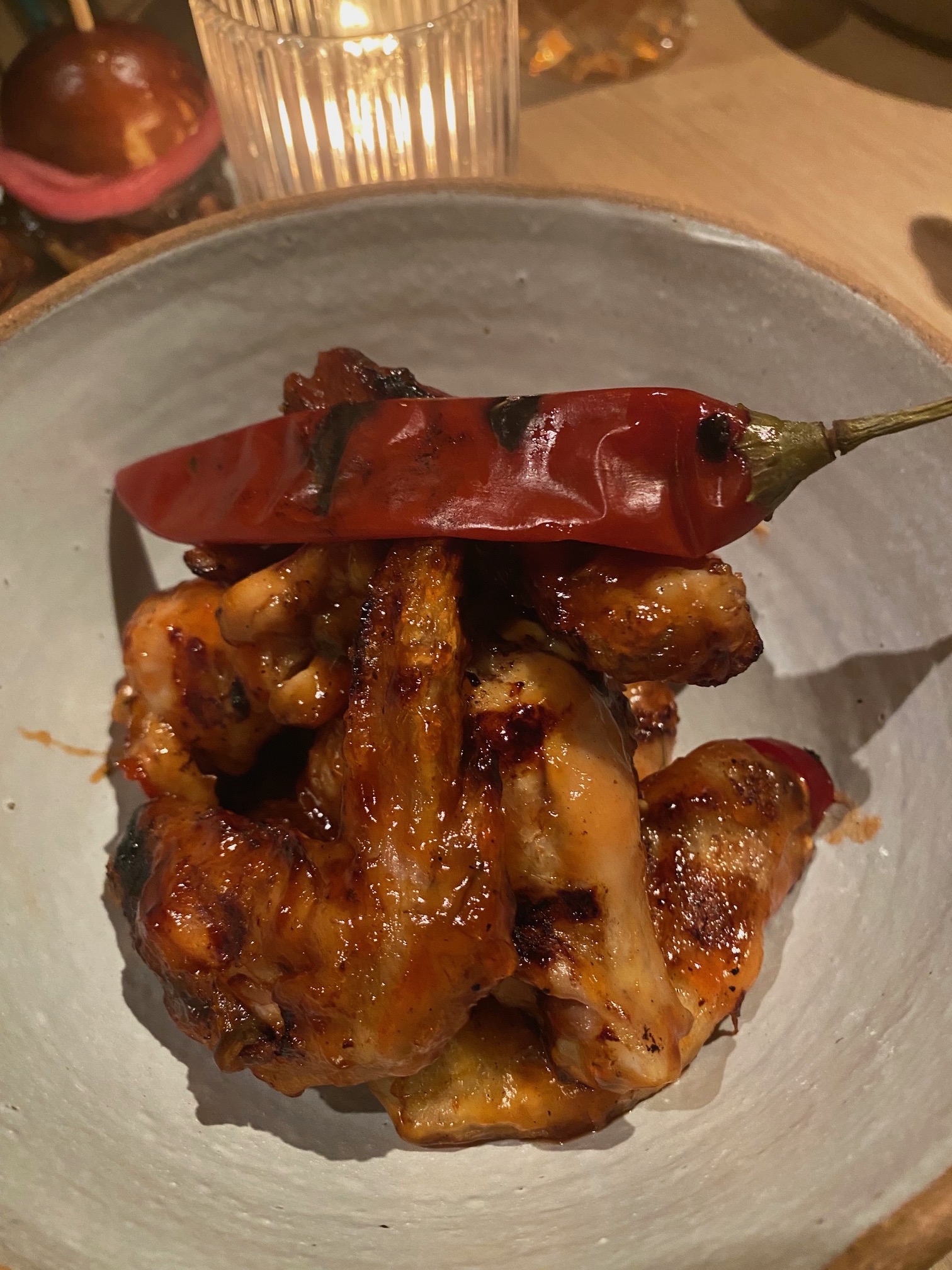 The soup at the moment is butternut squash velouté
laced with crème fraîche and the pop of Aleppo
pepper ($15).
The soup at the moment is butternut squash velouté
laced with crème fraîche and the pop of Aleppo
pepper ($15).
The
grilled, not fried, chicken wings (right)
are meaty and treated to a powerful sweet chili
marinade ($17). Of course, there has to be a
pasta, and the rigatoni with broccoli di rabe and
peppery rosemary-inflected sausage is bound with a
runny egg ($15).
The best of the appetizers was a platter of
plump, rare sliders ($25), and two of them would
make a main course. Made of beef brisket, they are
very juicy and have a rich flavor all their own.
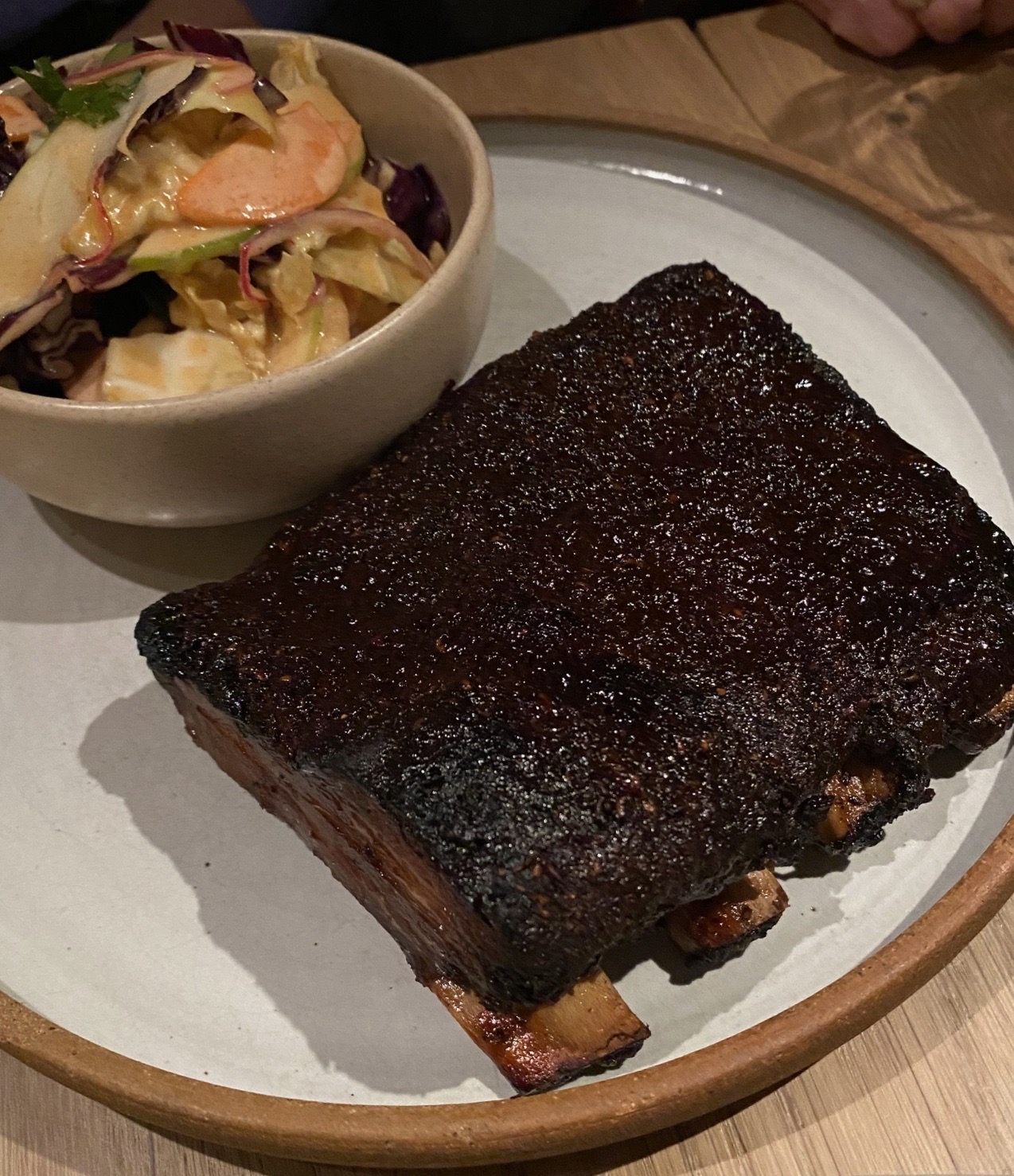 There is also a
pizza section with four items. I found the crust
excellent and the topping of red hot mangalitsa
pig sausage and pickled chili with a drizzle of
honey an exciting idea ($29). Milder but delicious
was a pizza with wild mushrooms, sweetened onions,
a creamy béchamel and a dash of Sherry ($26).
These are good-sized pies, so a table of four will
all get a slice or more.
There is also a
pizza section with four items. I found the crust
excellent and the topping of red hot mangalitsa
pig sausage and pickled chili with a drizzle of
honey an exciting idea ($29). Milder but delicious
was a pizza with wild mushrooms, sweetened onions,
a creamy béchamel and a dash of Sherry ($26).
These are good-sized pies, so a table of four will
all get a slice or more.
If you’ve had a starter, you’ll definitely
be taking some of the main courses home with you.
The smoked chicken with sweet potatoes and figs
($36) carries through the sweet-tangy flavor
components, while the very generous portion of
smoked black pepper-encrusted, maple slathered
Duroc ribs ($34) ranks with the best in town and
probably among the least expensive (left).
Grilled branzino ($76) took on good flavor from
the Savoy cabbage being charred, served with a
tomatillo salad in lemon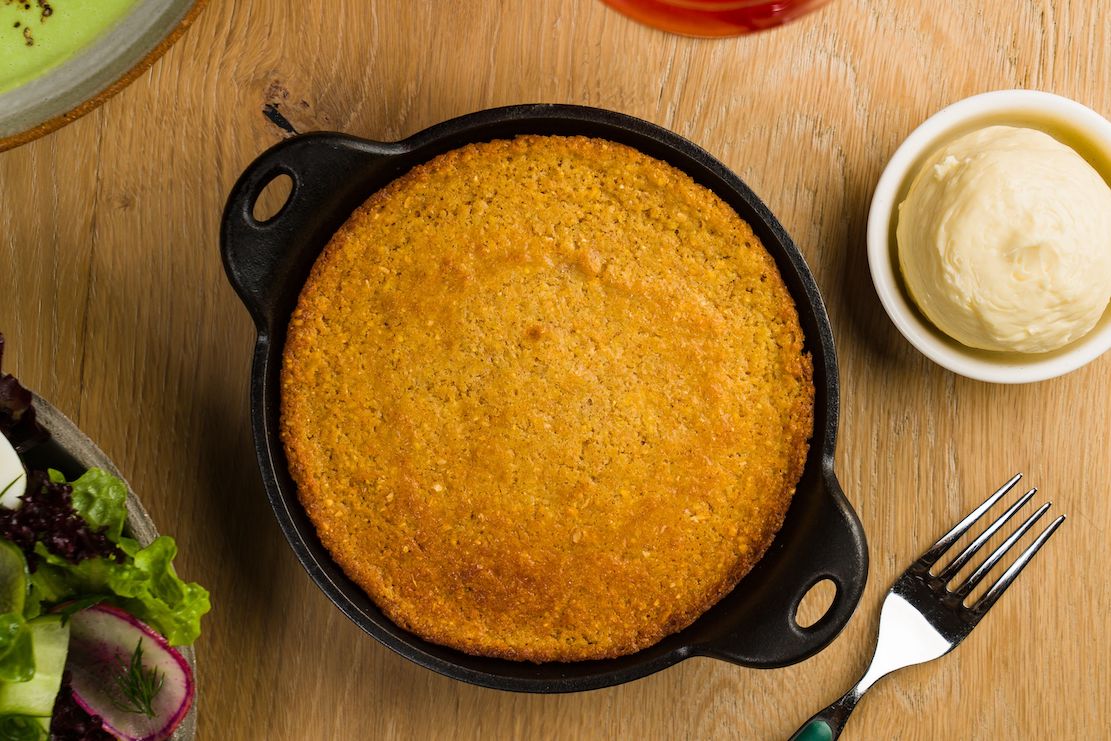 vinaigrette.
The burger ($28) with a lemon-caper vinaigrette
and fat, crispy potato wedges is okay, but if I
had a choice between it and those sliders, I’d
definitely go with the latter (which are $3
cheaper).
vinaigrette.
The burger ($28) with a lemon-caper vinaigrette
and fat, crispy potato wedges is okay, but if I
had a choice between it and those sliders, I’d
definitely go with the latter (which are $3
cheaper).
You would be wise to order the warm,
textured cornbread ($10), which I would love
having for breakfast with eggs and country ham. It
comes in a black skillet and with honey butter as
big as an ice cream cone.
Karen Fodere-Fallier’s pastries are
refinements on tradition, as with her chocolate
mousse with peanut butter and white chocolate
season with sea salt ($15) and a passionfruit
sundae with yogurt ice cream, rum syrup and cotton
candy and a house-made dulce de
leche ($15).
The wine list has been solidly built up by
Dylan York at prices that are more moderate than
too high.
Sweetbriar
sounds more like a Kentucky bourbon label but the
name tells you a lot, when the food has both sweet
and briary elements and a whole lot of Southern
hospitality .
Open for dinner
nightly.
By John Mariani
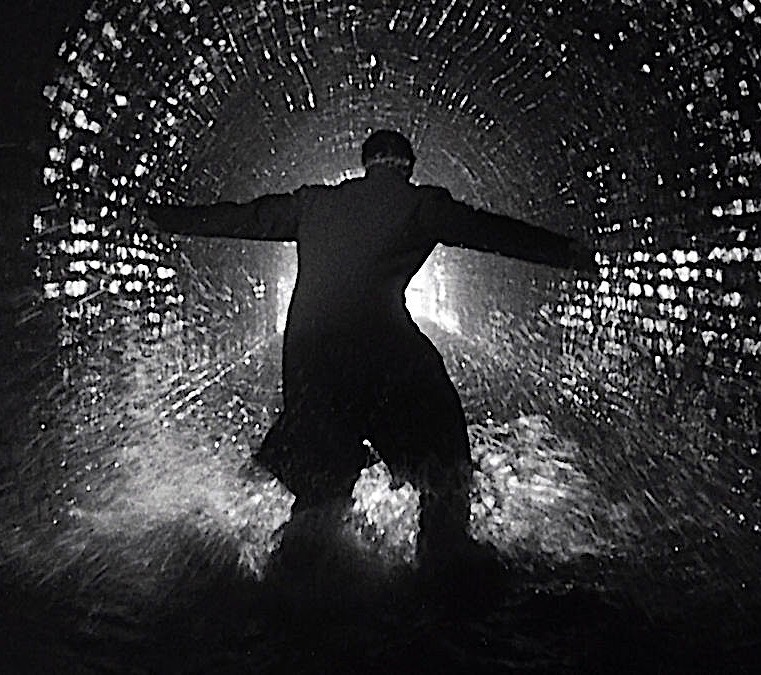
 Until Katie could show Alan Dobell real
progress on the Harry Lime story, she needed to
spend the bulk of her time on the story she’d
been working on for two months about a city
hospital financial scam, and she wished she were
out from under it. The investigation had gone
well, but it was drudging research, combing
through masses of financial documents, patients’
histories, billing statements, and how the
hospitals’ assets were being allocated.
Until Katie could show Alan Dobell real
progress on the Harry Lime story, she needed to
spend the bulk of her time on the story she’d
been working on for two months about a city
hospital financial scam, and she wished she were
out from under it. The investigation had gone
well, but it was drudging research, combing
through masses of financial documents, patients’
histories, billing statements, and how the
hospitals’ assets were being allocated.
She felt she had the main culprits squarely
in her sights—several doctors and administrators
at the hospital in league with two bureaucrats in
the NYC comptroller’s office. It was the usual
scam—overbilling and transfers of assets that
benefited the scammers, who preyed on the woefully
run city hospitals.
So, for the following week, aside from her
reading about Graham Greene, she worked overtime
to get the hospital story to Dobell, who asked her
at least twice when it was coming in, adding, “I
hope you’re not spending too much time on that
Harry Lime thing.”
Finally, the hospital story was finished
and handed to Dobell, who said, “I assume you’ve
got all the research for the copy editors?”
“Don’t I always?”
“Yeah, you do. It feels a little thin,”
said Dobell, bouncing the paper copy in his hands.
“It’s tight,” said Katie, “but it’s all
there.”
“I have a feeling you rushed this, Katie,
but let me read it over the weekend. And, hey,
look at it this way: No one tried to kill you on
this project. That’s gotta be worth something.”
“It was
a pleasant break from the previous mayhem,”
said Katie. “And now, Alan, I am going to take a
long weekend and wait till I hear you heap praise
on my work.”
Dobell shrugged
and said, “Take Monday off. I am.”
*
*
*
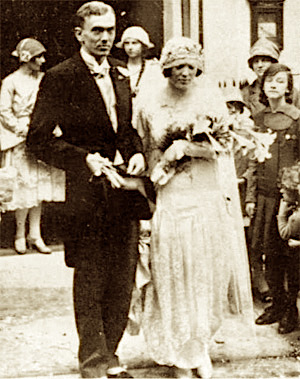
While David was
enjoying himself researching The Third Man
movie, Katie was making a timeline of Graham
Greene’s bio, with a focus on the time he joined
MI6. 
Greene was born October 2, 1904, the son of
a local schoolmaster. As a troubled youth, he ran
away from school, tried to poison himself several
times—he once took fourteen aspirins and jumped in
the school pool—and underwent psychotherapy.
While at Oxford University, he converted to
Catholicism, and in 1927 married Vivien
Dayrell-Browning (left). While he was
working as a copy editor for The Times
his first published work was a book of poems,
followed by an unsuccessful novel, The Man
Within (1929). He became film and literary
critic for The
Spectator, while beginning to write what he
called “entertainments,” thriller novels like Stamboul
Train (1932), A Gun for
Sale (1936) and The
Confidential Agent (1939), which sold well
enough. 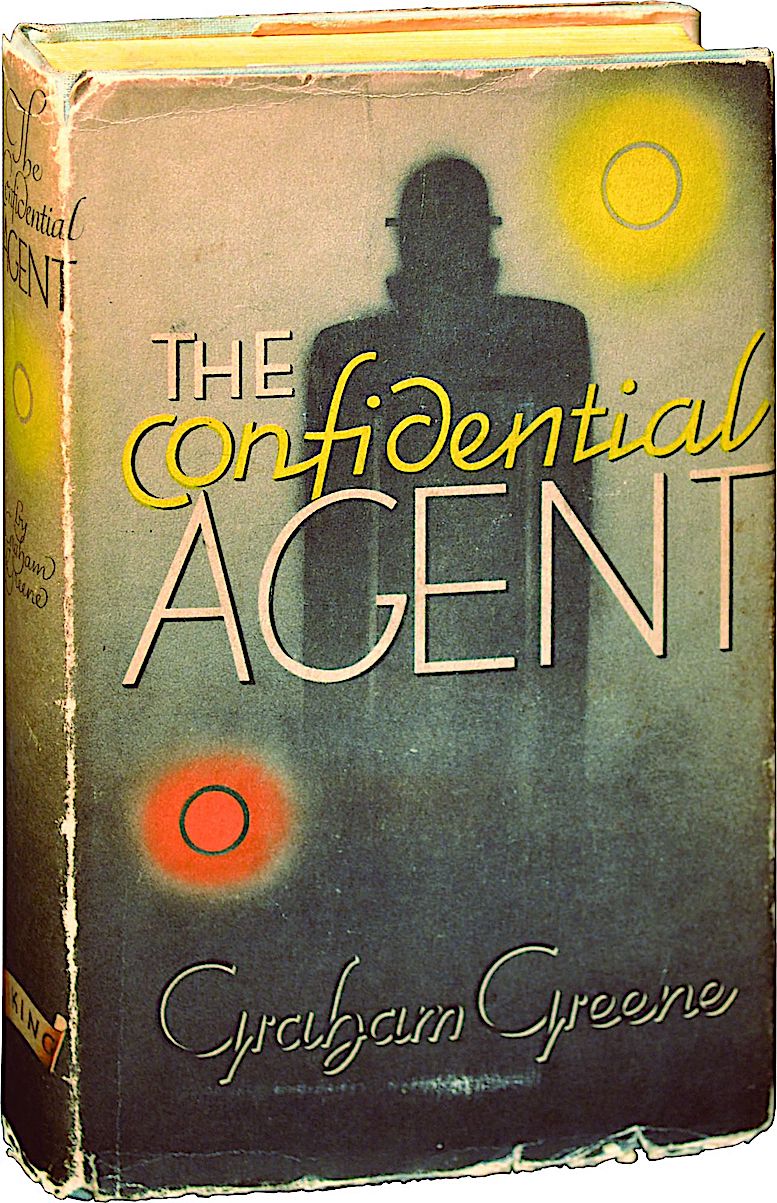
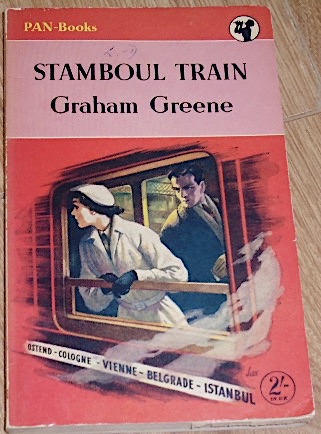 Reading those
novels and many to follow, Katie began to discern
common themes in Greene’s work. There was always a
pursuit, always a confused sense of morality and
hounding guilt, especially in what was considered
his best novel, The Power and
the Glory (1940) about an alcoholic priest
in Mexico hunted by the revolutionary government. Katie
remembered being assigned to read that in college,
at a time when questioning one’s own Catholic
faith seemed a rite of passage.
Reading those
novels and many to follow, Katie began to discern
common themes in Greene’s work. There was always a
pursuit, always a confused sense of morality and
hounding guilt, especially in what was considered
his best novel, The Power and
the Glory (1940) about an alcoholic priest
in Mexico hunted by the revolutionary government. Katie
remembered being assigned to read that in college,
at a time when questioning one’s own Catholic
faith seemed a rite of passage.
Greene’s entry into the British Secret
Service came in 1939 via the Ministry of
Information, which enlisted him and other writers
to churn out wartime propaganda. He was
based in London, where, like everyone else, he
endured the Nazi blitz of day and night bombings
by hiding in the depths of the London Underground,
of which he said, “I’m hiding underground, and
above the Germans are methodically smashing London
to bits all around me. It sounds like a thriller,
doesn’t it?”
 Katie highlighted the passage,
thinking of how Harry Lime had died while trapped
in the sewers of Vienna. She also marked a letter
from the same period in which Greene told his wife
that he had a Mr. Hyde side to his character whom
he called “Hilary Trench,” but insisted, “you need
never be afraid of meeting H. T. I’ve got to
convince you that he’s dead.” Katie highlighted
the name.
Katie highlighted the passage,
thinking of how Harry Lime had died while trapped
in the sewers of Vienna. She also marked a letter
from the same period in which Greene told his wife
that he had a Mr. Hyde side to his character whom
he called “Hilary Trench,” but insisted, “you need
never be afraid of meeting H. T. I’ve got to
convince you that he’s dead.” Katie highlighted
the name.
Bored at the Ministry of Information,
Greene sought to join MI6 (the equivalent of the
CIA in the U.S.; MI5 was like the FBI), which took
its time checking him out, inviting Greene to
lavish parties hosted by a wealthy, mysterious man
known as “Mr. Smith of China.” At those parties
MI6 members drank and encouraged their potential
recruits to drink more, chatting up candidates
like Greene to see if he might reveal anything in
his past that might compromise him in the work.
Finally he was  accepted in
the summer of 1941.
accepted in
the summer of 1941.
After training, which included a form of
lax boot camp regimen at which he was a dismal
failure, Greene was dispatched to the backwater
post of Lagos, West Africa, to gather information
from agents on both sides of the conflict as well
as from paid informers. Secrecy, deception and
manipulation were key to the job, but not
derring-do.
Indeed,
Greene was far from the war and spent a good deal
of time having lunch, tea, and dinner and watching
movies at an open-air cinema. The only part of his
job he enjoyed was sealing confidential papers
with his gold signet ring.
Re-located
to Freetown, Greene tried to be more aggressive,
taking trips “upcountry” to find agents to monitor
Vichy French movements. He also concocted a plan
to open a brothel where visiting Vichy French
might be seduced into giving up information. MI6
refused.
 While on the job, Greene wrote
another entertainment, The Ministry
of Fear, about a man convicted of a mercy
killing of his wife and sent to a psychiatric
prison which he comes to believe is actually run
by a Nazi spy ring. The novel sold very well and
was made into a film directed by Fritz Lang the
following year, 1944. Released from his MI6 duties
in 1942 and with money made from the sale of The Ministry
of Fear, Greene finally found himself on a
firm financial footing.
While on the job, Greene wrote
another entertainment, The Ministry
of Fear, about a man convicted of a mercy
killing of his wife and sent to a psychiatric
prison which he comes to believe is actually run
by a Nazi spy ring. The novel sold very well and
was made into a film directed by Fritz Lang the
following year, 1944. Released from his MI6 duties
in 1942 and with money made from the sale of The Ministry
of Fear, Greene finally found himself on a
firm financial footing.
It was then that director Carol Reed
contacted Greene. A fastidious professional, Reed
had a high reputation in British cinema,
especially for his 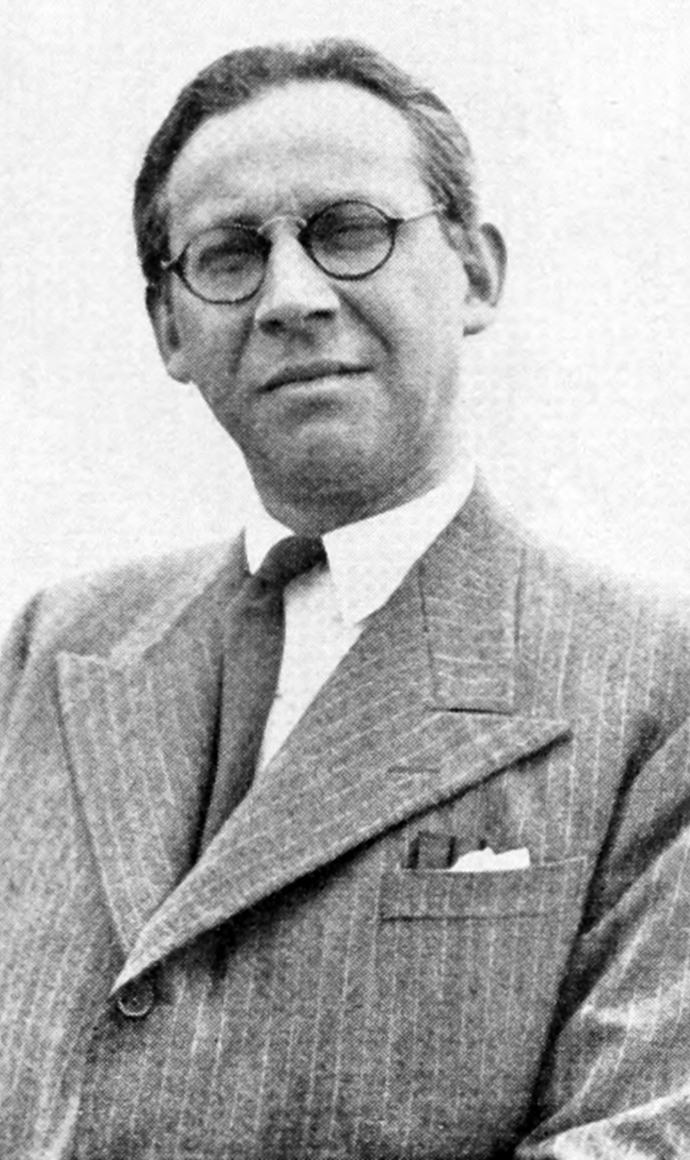 1947 film Odd Man Out,
the story of a IRA gunman hunted through the
rain-slick nighttime streets of Belfast. Having
enjoyed The
Ministry of Fear, Reed approached Greene
about making a movie from one of his short
stories, “The Basement Room,” which Reed convinced
producer Alexander Korda (right) to buy,
with Greene writing the screen play. The title was
changed to The
Fallen Idol and so was the plot. A
seven-year-old boy tries to protect his father’s
butler, named Baines, from a murder charge, but
lies unconvincingly to the police, who then go
after Baines.
1947 film Odd Man Out,
the story of a IRA gunman hunted through the
rain-slick nighttime streets of Belfast. Having
enjoyed The
Ministry of Fear, Reed approached Greene
about making a movie from one of his short
stories, “The Basement Room,” which Reed convinced
producer Alexander Korda (right) to buy,
with Greene writing the screen play. The title was
changed to The
Fallen Idol and so was the plot. A
seven-year-old boy tries to protect his father’s
butler, named Baines, from a murder charge, but
lies unconvincingly to the police, who then go
after Baines.
Always another
pursuit, thought Katie. Always a moral dilemma,
always more guilt. Never a clear path. It had been
the leitmotif of so much of Greene’s work, and the
story of The
Third Man was more of the same.
© John Mariani, 2016
❖❖❖
HOT TODDY TIME
By John Mariani
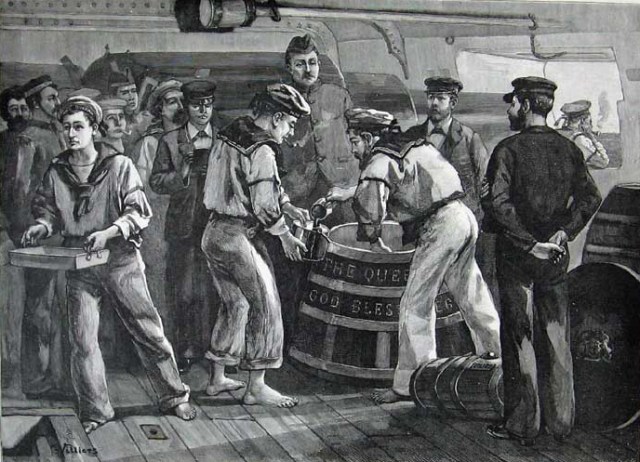
As I
write this, cold seems to have settled its
icy breath throughout much of North
America, when in Walt Whitman’s words, the sea
becomes “Howler and scooper of storms.” So, like
those who sail the seas, my thoughts turn to hot
toddies, which have been part of seagoing at least
since the 17th century. It’s a
very simple drink that can take myriad forms, and
the word itself dates back to the days when the
trade winds ran back and forth to India, where the
Hindi word tari
was used for the fermented sap of a palm tree.
 Originally,
the drink was made cold, but as time wore on and the
toddy became a favorite drink of British seamen, it
became a cold weather staple. In
contrast to grog—which was simply heated, sometimes
diluted, rum meant to keep body and soul together on
British ships—toddies have sugar in them, and
various spices. (The grog ration, named after
Admiral Edward "Old Grog" Vernon, was a
half-pint given out to all seamen until
1970.)At its simplest, a toddy is a mixture of rum
with boiling water, a couple of cloves, a stick of
cinnamon, sugar and a lemon rind.
Originally,
the drink was made cold, but as time wore on and the
toddy became a favorite drink of British seamen, it
became a cold weather staple. In
contrast to grog—which was simply heated, sometimes
diluted, rum meant to keep body and soul together on
British ships—toddies have sugar in them, and
various spices. (The grog ration, named after
Admiral Edward "Old Grog" Vernon, was a
half-pint given out to all seamen until
1970.)At its simplest, a toddy is a mixture of rum
with boiling water, a couple of cloves, a stick of
cinnamon, sugar and a lemon rind.
By the 19th century rum was joined by whiskey
and brandy and had as much popularity onshore as
off, sometimes with a lowly connotation distinct
from the uppity associations that punch enjoyed
among the upper class. An 1830s account remarked 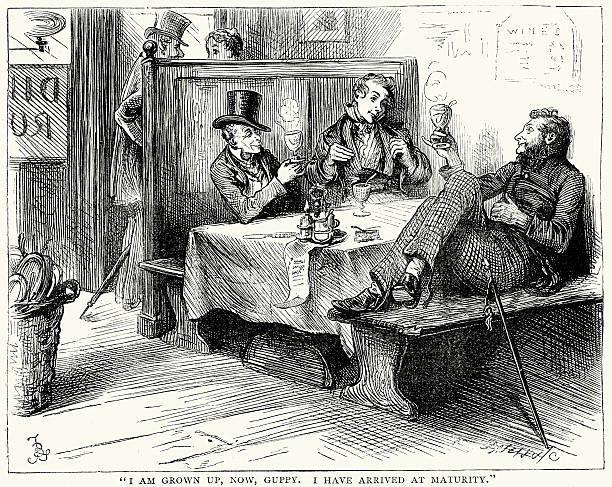 on the “universal practice of toddy
drinking among the middle-classes of the
countryside.” Brits
and Americans even made it into a verb—to “get
toddied.”
on the “universal practice of toddy
drinking among the middle-classes of the
countryside.” Brits
and Americans even made it into a verb—to “get
toddied.”
The pejorative wore off by the end of the
century, so that a hot toddy took on a conviviality
that allowed it to vie with punch and nogs as a
festive drink.
Nevertheless, you don’t hear that much about
toddies these days, unless it’s to help mellow the
effects of a head cold, which, I assure you, it does
with amazing charm. The steam can clear the sinuses,
the rum relaxes you, and the vitamin C in the citrus
fruits can’t hurt either.
One
of my favorite toddies, from a time when eggs were
used to give drinks body, is the Tom and Jerry,
created in the 19th century by “Professor” Jerry
Thomas, who also claimed responsibility for the
Martini (very much open to question). Today you
can buy a bottle of froth-inducing liquid that gives
you the egg white effect below.
1 egg
1 oz.
rum
1 oz.
brandy
1 Tbs.
powdered sugar
1/8 tsp.
powdered nutmeg
1/8 tsp.
powdered cinnamon
In two
bowls, beat the egg yolk and the egg white separately.
The whites should form soft peaks. Then mix
together. In a mug add the rum and brandy with the
powdered sugar, nutmeg, and cinnamon, and mix to
dissolve. Add
the egg mixture and fill with boiling water. Grate
some nutmeg on top.
I am a
little hesitant to recommend a dramatic drink called a
Blue Blazer, because it takes a dexterous display of
pyrotechnics. But,
frankly, it’s not a big deal to accomplish. Bartenders
used to do this sort of thing all the time; now they
can barely mix a gin and tonic.
1 tsp.
sugar
2 ½ oz.
boiling water
2 ½ oz.
Scotch
Cinnamon
Heat two large mugs. In one, dissolve the sugar in the boiling water, and in the other, place the heated Scotch and—carefully—ignite with a match. Then mix the two mugs back and forth to create a stream of blue flame between them. (It’s even better in a darkened room.) When the flames die out, pour into one mug, add a twist of lemon, and a grating of cinnamon.
❖❖❖
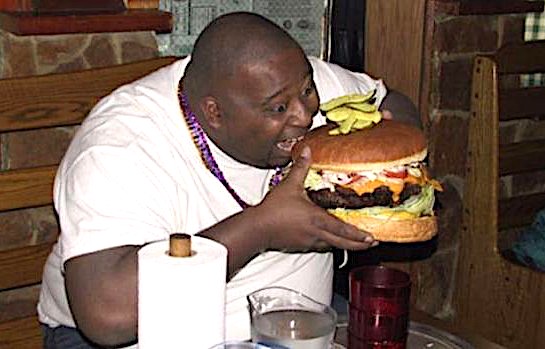
DEPARTMENT OF NO SURPRISES
According
to the Daily Mirror, two Australian teens
went to a McDonald’s where they bought three Quarter
Pounders, eating two and saving the third for a
friend, who never showed up. They nevertheless kept
it for him. Twenty years later one of them found the
burger and said, “It looks the same as the day we
bought it.”
❖❖❖
Any of John Mariani's books below may be ordered from amazon.com.
 The Hound in Heaven
(21st Century Lion Books) is a novella, and
for anyone who loves dogs, Christmas, romance,
inspiration, even the supernatural, I hope you'll find
this to be a treasured favorite. The story
concerns how, after a New England teacher, his wife and
their two daughters adopt a stray puppy found in their
barn in northern Maine, their lives seem full of promise.
But when tragedy strikes, their wonderful dog Lazarus and
the spirit of Christmas are the only things that may bring
his master back from the edge of despair.
The Hound in Heaven
(21st Century Lion Books) is a novella, and
for anyone who loves dogs, Christmas, romance,
inspiration, even the supernatural, I hope you'll find
this to be a treasured favorite. The story
concerns how, after a New England teacher, his wife and
their two daughters adopt a stray puppy found in their
barn in northern Maine, their lives seem full of promise.
But when tragedy strikes, their wonderful dog Lazarus and
the spirit of Christmas are the only things that may bring
his master back from the edge of despair. WATCH THE VIDEO!
“What a huge surprise turn this story took! I was completely stunned! I truly enjoyed this book and its message.” – Actress Ali MacGraw
“He had me at Page One. The amount of heart, human insight, soul searching, and deft literary strength that John Mariani pours into this airtight novella is vertigo-inducing. Perhaps ‘wow’ would be the best comment.” – James Dalessandro, author of Bohemian Heart and 1906.
“John Mariani’s Hound in Heaven starts with a well-painted portrayal of an American family, along with the requisite dog. A surprise event flips the action of the novel and captures us for a voyage leading to a hopeful and heart-warming message. A page turning, one sitting read, it’s the perfect antidote for the winter and promotion of holiday celebration.” – Ann Pearlman, author of The Christmas Cookie Club and A Gift for my Sister.
“John Mariani’s concise, achingly beautiful novella pulls a literary rabbit out of a hat – a mash-up of the cosmic and the intimate, the tragic and the heart-warming – a Christmas tale for all ages, and all faiths. Read it to your children, read it to yourself… but read it. Early and often. Highly recommended.” – Jay Bonansinga, New York Times bestselling author of Pinkerton’s War, The Sinking of The Eastland, and The Walking Dead: The Road To Woodbury.
“Amazing things happen when you open your heart to an animal. The Hound in Heaven delivers a powerful story of healing that is forged in the spiritual relationship between a man and his best friend. The book brings a message of hope that can enrich our images of family, love, and loss.” – Dr. Barbara Royal, author of The Royal Treatment.
 |
The Encyclopedia of American Food and Drink by John F. Mariani (Bloomsbury USA, $35) Modesty forbids me to praise my own new book, but let me proudly say that it is an extensive revision of the 4th edition that appeared more than a decade ago, before locavores, molecular cuisine, modernist cuisine, the Food Network and so much more, now included. Word origins have been completely updated, as have per capita consumption and production stats. Most important, for the first time since publication in the 1980s, the book includes more than 100 biographies of Americans who have changed the way we cook, eat and drink -- from Fannie Farmer and Julia Child to Robert Mondavi and Thomas Keller. "This book is amazing! It has entries for everything from `abalone' to `zwieback,' plus more than 500 recipes for classic American dishes and drinks."--Devra First, The Boston Globe. "Much needed in any kitchen library."--Bon Appetit. |
"Eating Italian will never be the same after reading John Mariani's entertaining and savory gastronomical history of the cuisine of Italy and how it won over appetites worldwide. . . . This book is such a tasteful narrative that it will literally make you hungry for Italian food and arouse your appetite for gastronomical history."--Don Oldenburg, USA Today. "Italian
restaurants--some good, some glitzy--far
outnumber their French rivals. Many of
these establishments are zestfully described
in How Italian Food Conquered the World, an
entertaining and fact-filled chronicle by
food-and-wine correspondent John F.
Mariani."--Aram Bakshian Jr., Wall Street
Journal.
"Equal parts
history, sociology, gastronomy, and just
plain fun, How Italian Food Conquered the
World tells the captivating and delicious
story of the (let's face it) everybody's
favorite cuisine with clarity, verve and
more than one surprise."--Colman Andrews,
editorial director of The Daily
Meal.com. "A fantastic and fascinating
read, covering everything from the influence
of Venice's spice trade to the impact of
Italian immigrants in America and the
evolution of alta cucina. This book will
serve as a terrific resource to anyone
interested in the real story of Italian
food."--Mary Ann Esposito, host of PBS-TV's
Ciao
Italia. "John Mariani has written the
definitive history of how Italians won their
way into our hearts, minds, and
stomachs. It's a story of pleasure over
pomp and taste over technique."--Danny Meyer,
owner of NYC restaurants Union Square
Cafe, The Modern, and Maialino.
|
 |
 |
 |
 |
 |
 |
MARIANI'S VIRTUAL GOURMET
NEWSLETTER is published weekly. Publisher: John Mariani. Editor: Walter Bagley. Contributing Writers: Christopher
Mariani, Misha Mariani, John A. Curtas, Gerry Dawes, Geoff Kalish.
Contributing
Photographer: Galina Dargery. Technical
Advisor: Gerry
McLoughlin.
If you wish to subscribe to this
newsletter, please click here: http://www.johnmariani.com/subscribe/index.html
© copyright John Mariani 2022

